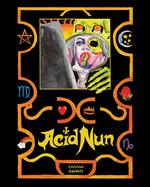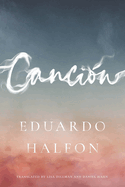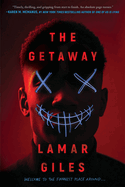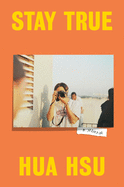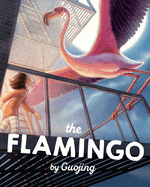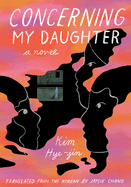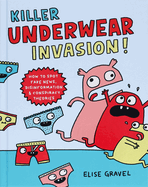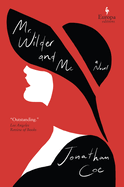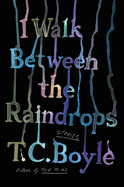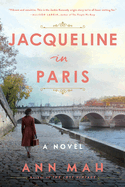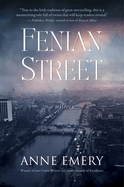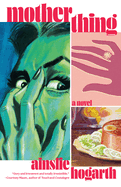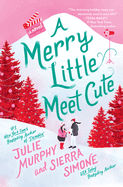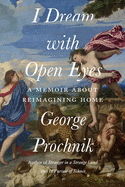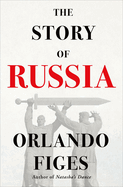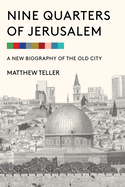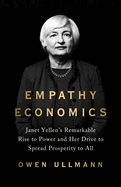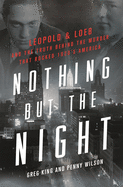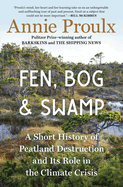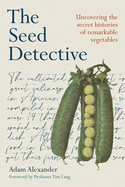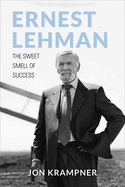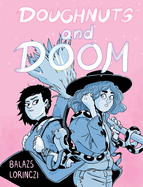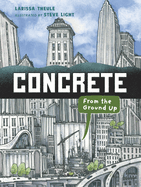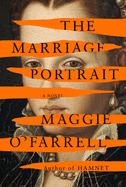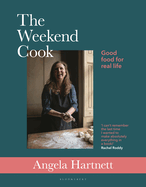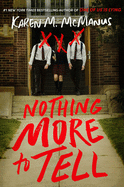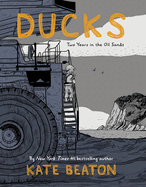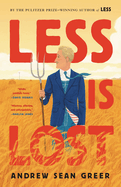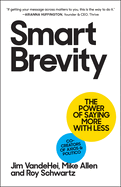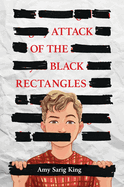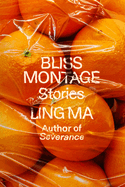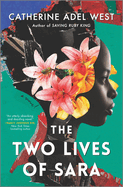Friday, September 30, 2022
Among the 25 titles reviewed this week are Corinne Halbert's graphic novel Acid Nun, "a beautiful and hallucinogenic journey toward self-healing"; Canción, Eduardo Halfon's "gorgeously rendered meditation on borderless identity"; and Lamar Giles's The Getaway, an "intense and unnerving YA dystopian novel" that follows the struggles of a young Black man and his friends under a corporate dictatorship; plus so much more!
We were deeply saddened to learn of the death of Hilary Mantel, beloved two-time Booker Prize-winning author of the Wolf Hall series, last week at age 70. Our hearts go out to her husband, her family and her many friends and fans.
Canción
by Eduardo Halfon, transl. by Lisa Dillman and Daniel Hahn
Eduardo Halfon (Mourning; Monastery) has published a dozen books in Spanish; four are currently available in English translations. Seeming to challenge his substantial output, Halfon explained in a 2015 comment to Shelf Awareness, "I'm only writing one book, and everything I publish along the way is just part of it. As if each book I write is a page or a chapter." That "one book" is comprised of intriguing autobiographical fictions in which Halfon often inserts himself into multilayered narratives inspired by his globally scattered extended family. In the exquisite Canción, a fictional writer--also named Eduardo Halfon--attempts to understand his grandfather's extraordinary life.
"I arrived in Tokyo disguised as an Arab," Eduardo (the character) admits as he's greeted at the airport in three languages--Arabic, Spanish, English--by a delegation representing a Lebanese writers' conference to which he's been invited. His questionable Lebanese credentials originate from his Beirut-born Jewish grandfather (also his namesake); he was legally Syrian, given that Lebanon wasn't a country until 1920, three years after he left Beirut. The older Eduardo's globe-trotting ended in Guatemala, where in 1967, during the decades-long Guatemalan civil war, he was kidnapped and then released by guerillas. The author brilliantly weaves what is personal with the real-life horrors of war: Kaibiles forces, the Dos Erres massacre, the vicious murder of rebel Rogelia Cruz.
Lisa Dillman and Daniel Hahn, who have translated previous books by Halfon, work in consultation with the author. The results are nonlinear vignettes that cross decades, countries, characters and world events in a gorgeously rendered meditation on borderless identity, historical traumas and ongoing repercussions. --Terry Hong, Smithsonian BookDragon
Discover: A writer's quest to understand his peripatetic grandfather's impressive life becomes an exquisite meditation on identity, politics and a disturbing history.
Concerning My Daughter
by Kim Hye-jin, transl. by Jamie Chang
Award-winning Korean novelist Kim Hye-jin's Concerning My Daughter is a clear-eyed character study of the fraught relations among biological and found families alike. When an unnamed, widowed narrator agrees to let her adult daughter, Green, move in with her, she's already wary of how their lives will cohere. And that's before Green reveals that her girlfriend, Lane, will be joining her.
While Green's mother resists accepting her daughter's partner, she is simultaneously thrown into chaos at work as her managers at the nursing home conspire to provide a lower quality of life for the patient she feels most intimate with, a once-successful diplomat named Jen, now suffering from dementia. As the narrator struggles with how to articulate the ways in which she cares for Jen, Green becomes involved in a campus protest against her employer's discrimination toward gay colleagues, leading Green's mother to reconsider what "family" might mean in the context of her own heart.
In Jamie Chang's translation from the Korean, Green's mother's voice guides Concerning My Daughter with a no-nonsense approach. Kim captures the raw details of cleaning the bodies of dementia patients as well as the immovable "dark silence" that "flows" between mothers and daughters when communication changes nothing. This unflinching perspective illuminates the extraordinary power of tenderness in such a context. Kim's keen attention to character reveals the nuances of her narrator's pragmatic brand of compassion. In this way, Concerning My Daughter manages to capture a societal need for both accepting collective complicity and practicing enduring empathy. --Alice Martin, freelance writer and editor
Discover: A patient and thoughtful meditation on the personal and political stakes of caring for others, Concerning My Daughter is a layered but concise character sketch.
Mr. Wilder and Me
by Jonathan Coe
The "Mr. Wilder" of this novel's title is Austria-born Hollywood director Billy Wilder (1906-2002), who was behind such cinema gold as Double Indemnity (1944), Sunset Boulevard (1950) and The Apartment (1960). The "me" of the title is 57-year-old narrator Calista, a London film composer. The enchanting Mr. Wilder and Me by Jonathan Coe (What a Carve Up!; Middle England) lays out the connection between the two characters: the novel is Calista's account of how a Billy Wilder movie dramatically changed her life.
In 1976, Calista Frangopoulou, age 21, is backpacking across the U.S. and winds up at a Beverly Hills restaurant with Wilder and his screenwriting collaborator, Iz Diamond (1920-1988). Calista, unfamiliar with their work, learns from the table talk that the men are stuck on the script for a film called Fedora, which centers on a reclusive movie star living on a Greek island. Back home in Athens the following year, Calista receives a call from Fedora's Greek production office. And "three days later I was on a plane to Corfu" to become the movie set's translator.
Mr. Wilder and Me is a frame story in which Coe gives Calista a present-day narrative arc, but readers will be itching to return to the Fedora set, where Wilder holds court and Diamond laments to Calista about his and Wilder's waning power: "Our last big hit was fourteen years ago." The novel is a gauzy, glittery and wistful paean to two of Old Hollywood's brightest bulbs as well as a disarmingly frank look at the way status can unjustly diminish with age. Unfortunately, that's showbiz. --Nell Beram, author and freelance writer
Discover: Mr. Wilder and Me is a gauzy-glittery and wistful novel about a young Greek woman's encounter with two of Old Hollywood's brightest bulbs: Billy Wilder and Iz Diamond.
I Walk Between the Raindrops
by T.C. Boyle
School shootings, Covid-19 quarantines, toxic masculinity: these are just a few of the hot-button subjects T.C. Boyle (The Relive Box and Other Stories; The Harder They Come; San Miguel) explores in I Walk Between the Raindrops, his collection of 13 surprising and imaginative stories. In the title selection, a man gains the unwanted attention of a mentally unstable woman at a bar before trying unsuccessfully to play matchmaker for an old friend, tragically misreading both situations. "Asleep at the Wheel" imagines a world where such technology as robot police and self-driving cars usurp the authority of the people they aim to serve, and "The Thirteenth Day" delves into the early pandemic experiences of a couple trapped on a cruise ship under quarantine, their fear and boredom both humorous and palpable.
Boyle's voice, a mainstay of short fiction for nearly five decades, is distinctive and a bit ornery, giving each tale a particular texture and making even mundane interactions feel meaningful. In a moment of ominous foreshadowing in "The Apartment," an unusually robust elderly woman proclaims: "Not only am I hardly ever ill, but I make a point of keeping all my blood inside my body at all times--don't you think that's a good principle to live by?" One thing all of the characters seem to have in common, though, is a sense of aloofness, as though they are both appalled by and impervious to the tragedies that surround them. What results is a collection that is thought-provoking and quietly funny, even as it serves as an unsettling reminder that no one is ever truly safe. --Angela Lutz, freelance reviewer
Discover: T.C. Boyle, a master of short fiction, explores hot-button subjects in this collection of 13 surprising, quietly funny and imaginative stories.
Jacqueline in Paris
by Ann Mah
When 20-year-old Jacqueline Bouvier arrives in Paris in 1949, she's hoping to be wowed by architectural gems, delicious cuisine and chic fashions. In her third novel, Jacqueline in Paris, Ann Mah (The Lost Vintage; Mastering the Art of French Eating) delves into the more complicated reality of Jackie's year abroad: beauty and history in spades, but also the lingering shadows of the recent war and the uncertain threat of Communism.
After sailing across the Atlantic with her fellow students, Jackie settles into an apartment in Paris with the widowed Comtesse de Renty and her two grown daughters. Jackie dives into classes and cafés and wanders the city on her own. She begins to imagine a different life for herself, one free of social expectations and her mother's disapproval. That life seems tantalizingly close when she meets Jack Marquand, a dashing American writer. But even from thousands of miles away, the social pressures and financial realities of Jackie's future prove hard to ignore. And the more she learns about her hosts' wartime experiences, the more she struggles to reconcile her own sheltered life with what Paris, and all of Europe, has suffered. The intellectuals she meets also challenge her to reconsider her assumptions about politics, womanhood and love.
Mah sensitively describes postwar Paris in its hollow-cheeked elegance, letting readers see it through Jackie's sharp eyes. Jacqueline in Paris is a portrait of a young woman waking up to the world in its glory and heartbreak--and the beginning of Jackie's lifelong love affair with la belle France. --Katie Noah Gibson, blogger at Cakes, Tea and Dreams
Discover: Ann Mah's perceptive third novel depicts postwar Paris through the eyes of a young Jacqueline Bouvier.
Mystery & Thriller
Treasure State
by C.J. Box
Montana becomes ground zero in the search for riches in the superbly satisfying Treasure State, C.J. Box's sixth intriguing mystery about private investigator Cassie Dewell. Two cases vex Cassie: a con man hides in plain sight, and an anonymous benefactor claims to have buried treasure somewhere in the state and dares the public to find it.
Wealthy Florida widow Candyce Fly hires Cassie to find a charming con man who bilked her out of millions of dollars and then vanished. Candyce had previously hired another investigator who had tracked the swindler to Anaconda, an old Montana mining town, before vanishing. To find the con man who swindled three additional women, Cassie puts on hold the investigation into who is responsible for a hidden "chest with gold." This has attracted national attention after someone teases the treasure's location in a poem posted in a bar: "My fortune is your puzzle."
Box's carefully layered plotting and expert storytelling shine in Treasure State. He mines conspiracies and supposedly good deeds that cover up the evil that motivates characters. Treasure State marks a most welcome return of the fearless Cassie, who, before this, appeared in The Bitterroots and whose adventures have been adapted to television's Big Sky. The refreshing appearance of characters from previous novels in the series adds depth to Treasure State. Box (Vicious Circle; Off the Grid) adds bits of humor as Cassie deals with her mother, who never met a secret she could keep. Box skillfully weaves the contemporary view of Montana's growth with a look at its mining history, which earned the state its second nickname, "The Treasure State." --Oline H. Cogdill, freelance reviewer
Discover: Treasure State, a richly satisfying thriller, marks the welcome return of private investigator Cassie Dewell, who tracks a con man and a hidden treasure across Montana.
Fenian Street
by Anne Emery
Canadian author Anne Emery (Postmark Berlin) continues her in-depth look at Ireland with Fenian Street, the 12th novel in the Collins-Burke mystery series, which tells an engrossing story about a young man's ambition and seemingly unattainable goals.
Shay Rynne has wanted to join the Garda Síochána, the Irish police, since childhood, but that aspiration seems impossible in the early 1970s. Unlike the other officers, he grew up poor, in public housing--the Corporation flats on Dublin's Fenian Street--and in a family that sometimes skirted the law and distrusted the police. Shay is even more determined to join the police after his friend Rosaleen McGinn dies in a fall down the back staircase at the hotel where she worked. Although Rosaleen's death is ruled accidental, Shay believes she was murdered and vows to find her killer. Shay joins the Garda with the help of compassionate Detective Sergeant Colm Griffith, who also is his godfather. The transition is not smooth: other officers make fun of his background. Shay also makes an enemy of the detective who originally handled the investigation into Rosaleen's death and who resents his intrusion. Although Shay sees firsthand police corruption and brutality, he isn't deterred.
Emery delves deeply into the motives and personality of Shay, who is determined to be "a conscientious policeman who would never cause harm to innocent people." Fans will be delighted to see the return of such characters as Father Brennan Burke from earlier books in the series, and she adds depth to Fenian Street by depicting the politics of the era, giving a full sense of the Irish community. --Oline H. Cogdill, freelance reviewer
Discover: Fenian Street is a riveting story, set in the 1970s, about a young man's seemingly unattainable ambition to join the Irish police.
Science Fiction & Fantasy
Motherthing
by Ainslie Hogarth
Ainslie Hogarth's Motherthing is a grim novel of family drama and mental illness, yet a bizarrely funny glimpse into one woman's mind. In its opening pages, Abby, who narrates, and Ralph have recently moved in with Ralph's mother, Laura, hoping to nurse her through her depression. But instead, Laura takes her life, Abby purloins Laura's coveted opal ring and Ralph falls into despair. "Because even though he'd been strong when we'd moved in, strong enough to move in--equipped with resources he'd downloaded from a website called the Borderline Parent... being near her stirred rotten dangerous things inside him."
Abby, very much in the throes of dealing with her own mother's shortcomings and abuse, has identified Ralph as part mother, part god, the "Perfect Good" in her life. Abby desperately wants to have a child of her own, to embody the kind of mother that neither she nor Ralph got to have. She works at a nursing home where she considers her favorite resident her "baby" and, simultaneously, the perfect mother she never had. This fantasy is disrupted by the appearance of the woman's real daughter, which might just push Abby over the edge. Because paired with her nurturing impulse, Abby secretly harbors intense rage. Her love verges on violence.
Hogarth (The Boy Meets Girl Massacre (Annotated)) rocks readers via Abby's turmoil, her swings from devotion to fury, self-loathing to self-aggrandizement. The result is a darkly comic, kaleidoscopic novel of unhealthy fixations, love, murder, the gifts and wounds that family can inflict and one woman's fight to save herself. --Julia Kastner, librarian and blogger at pagesofjulia
Discover: Mothers and motherhood haunt this alarming, dark, weirdly funny novel of family ties and the power of just the right recipe to heal all wounds.
Romance
A Merry Little Meet Cute
by Julie Murphy and Sierra Simone
Sierra Simone (American Queen; Priest) and Julie Murphy (Pumpkin; If the Shoe Fits; Puddin') team up for A Merry Little Meet Cute, a Christmas rom-com with enough steam to power Santa's sleigh. Plus-sized adult film performer Bee Hobbes's producer, Teddy Ray Fletcher, is covertly attempting a career pivot to wholesome, family-friendly Christmas films. When the lead actress for Teddy's first movie is suddenly unavailable, Bee is unexpectedly cast in her first mainstream role. Her costar is none other than her teen crush, former boy band member Nolan Shaw, who happens to be a huge fan of hers. Both actors, known to some as bisexual disasters, need the shoot to go well: Bee wants to build a career for when she retires from adult entertainment, and Nolan needs to improve his bad-boy image as well as pay his mother's medical bills. Can they resist their attraction, keep Bee's and her producer's other professional endeavors secret, and make some movie magic?
A Merry Little Meet Cute is a bighearted, frequently hilarious romance that seamlessly weaves the character-driven writing Julie Murphy is known for with the emotional depth and searing eroticism of Sierra Simone's work. This story--body-, sex- and sex work-positive--manages to be sexy, funny and even whimsical at times, indulging in physical and emotional intimacy while maintaining tension throughout. Readers will be grateful that the authors have neatly set up sequels, because A Merry Little Meet Cute is the perfect gift for any time of year. --Suzanne Krohn, librarian and freelance reviewer
Discover: A former bad-boy pop star and a plus-size adult performer costar in a family-friendly Christmas movie in A Merry Little Meet Cute, a steamy, funny romance with a touch of holiday magic.
Graphic Books
Acid Nun
by Corinne Halbert
Acid Nun by artist Corinne Halbert is a beautiful and hallucinogenic journey toward self-healing through a dazzling landscape of Satanic splatter horror. Annie is a sexually and chemically experimental human character, styled in a nun's habit, who connects momentarily with Eleanor, a fanged entity from the spiritual plane. When a bad acid trip, however, traps Annie in an alternate dimension, Eleanor races against time to find and rescue her from certain destruction, with the help of Bahomet, Eleanor's "demon brother... oldest lover." What follows is their psychedelic and erotic quest for sanctity, consulting with powers of divination and scouring the bowels of hell in order to release Annie's inner child from bonds of her past and return Annie to agency over her own body and soul.
First issued as a series of comics, this volume charts the story's full, spectacular odyssey in pulsating neon colors, complete with Halbert's confessional notes about the catharsis she found in the creative process. Although the grotesqueries are highly stylized and explicit, the overall tone of the book is liberating and disarmingly self-aware. There is plenty of humor as well, with the shapeshifting narrator spirit speaking in folksy vernacular ("C'mon over! Step rite up! Let's take a lil' trip of ours own, strate inta' Annie's mind"), which borders on camp without undermining the heavier themes at play.
Nonetheless, the captivating centerpiece of Acid Nun is Halbert's hypnotic artwork, which draws on cult horror motifs. The dazzling, full-page paintings could easily stand on their own. --Dave Wheeler, associate editor, Shelf Awareness
Discover: In this cathartic work of healing from past trauma, the demons are endearing and the artwork is magnificently mind-bending.
Biography & Memoir
Stay True
by Hua Hsu
Hua Hsu, whose parents moved from Taiwan to the United States before he was born, handily distills the immigrant experience in Stay True: "The first generation thinks about survival; the ones that follow tell the stories." In his memoir, fueled by nostalgia but free of sentimentality, Hsu tells lots of stories--about friendship, assimilation, grief--but they are all in service to the book's throughline: the story of Hsu finding his voice.
Hsu was born in Illinois in 1977. During his first year at Berkeley, the self-serious Hsu ("I had a fraught relationship with fun") meets the cocksure Ken, who is hardly a logical friendship match: "He was a genre of person I actively avoided--mainstream." But Ken is also a great guy and a fellow Asian American who, intriguingly to Hsu, experienced the world much differently: as a Japanese American, Ken "felt some claim to American culture that I couldn't imagine."
A tragic event occurs about halfway into Stay True, and it changes Hsu's life and recalibrates the narrative strands already in progress. Hsu (A Floating Chinaman) brings readers a coming-of-age memoir with both an iridescent specificity and a haunting universality. About early adulthood he writes, "you're eager for something to happen, passing time in parking lots, hands deep in your pockets, trying to figure out where to go next. Life happened elsewhere, it was simply a matter of finding a map that led there." For some readers Stay True will offer, if not a map, then the suggestion of a path forward. --Nell Beram, author and freelance writer
Discover: Hua Hsu's coming-of-age memoir has both an iridescent specificity and a haunting universality.
Live Wire: Long-Winded Short Stories
by Kelly Ripa
Live Wire: Long-Winded Short Stories, the first book from Emmy Award-winning actress and talk show host Kelly Ripa, is not a memoir. Instead, it's an enjoyable and brightly written collection of personal essays that allows her to cherry-pick the highs and lows of her life. At age 20, she joined the daytime soap opera All My Children, where she met and married her costar Mark Consuelos. She began cohosting the morning talk show Live with Regis and Kelly in 2001. When Philbin retired a decade later, she became the head of the show. "[P]laying yourself on television is the hardest role I've ever had," writes Ripa, "especially when I started before I even knew who I really was."
Readers will find a saltier Ripa on these pages than on her morning show--complete with f-bombs and sexually straightforward tales. (One account begins with her and Mark's first attempt at sex after she gave birth to their first child and ends with a trip to the hospital.) Fans will love the nuggets of advice sprinkled throughout her essays, including "I think it's important never to fake illness or orgasm." Essay topics include Botox and plastic surgery ("My neck was aging in dog years compared to my face"); the transition to empty-nest parenthood; when Mark broke up with her five days before their wedding; and her relationship with tabloids. She writes gingerly of her relationship with the curmudgeonly Philbin, realizing belatedly that he may not have thought they were as close as she thought they were.
Live Wire is a splendid, fast-moving autobiographical essay collection with polished bon mots and real heart. --Kevin Howell, independent reviewer and marketing consultant
Discover: Kelly Ripa's first book, Live Wire, is an entertaining, fast-moving, thoughtful and polished collection of autobiographical essays that allows her to be racier that morning TV allows.
I Dream with Open Eyes: A Memoir
by George Prochnik
George Prochnik's I Dream with Open Eyes is a bookend to Home/Land, the 2022 book written by his wife, New Yorker staff writer Rebecca Mead, about their decision to move with their teenage son from New York City to London in the summer of 2018. But where Mead's book focuses on her reabsorption into the native land she'd left 30 years earlier, Prochnik chooses to wrestle with the moral dilemma of what it would mean to continue to live in a country that could elect Donald Trump as its president. The result is a thoughtful, if sometimes challenging, journey through that process.
While the intellectual tapestry Prochnik (The Impossible Exile: Stefan Zweig at the End of the World) weaves is complex and variegated, the life and work of Sigmund Freud is one of its central themes. At the core of the memoir is an account of the early 20th-century debate between Prochnik's great-grandfather James Jackson Putnam, a distinguished psychologist and neurologist from Boston, and his mentor Freud, which pitted Putnam's "idealistic faith in human nature" against Freud's "dark, worldly view, which despaired of humanity en masse and its respective experiments in civilization." As he has throughout his life, Prochnik finds himself "torn between these disjunctive perspectives" with increasing urgency.
Ultimately, Prochnik admits, his comfortable life in the U.S. came to feel "like a space capsule cut off from the mothership, hurtling through the darkness in freefall." While the internal landscape many Americans traverse certainly will differ from his, with future elections looming, the decision he faced may become an equally pressing one for others. --Harvey Freedenberg, freelance reviewer
Discover: George Prochnik ruminates on his family's complex decision to abandon New York City for London following the 2016 election.
History
The Story of Russia
by Orlando Figes
To understand the Russia of today requires knowing how Russians have defined--and redefined--themselves for centuries, according to renowned historian Orlando Figes's The Story of Russia. The "story" of Russia, he claims, is not so much about people and events but those ideas rooted in the distant path that are "continuously reconfigured and repurposed to suit its present needs and reimagine its future."
From its debated origin stories ("no other country has been so divided over its own beginnings") in Kievan Rus in the first millennium to Vladimir Putin's aggressive nationalism in the third, Figes (The Europeans; Natasha's Dance) expertly dissects the impulses and most cherished ideas that animate Russia, then and now. He explains how religion played a critical role in strengthening the imperial autocracy as Russia adopted the "Third Rome doctrine," positioning itself as the last bastion of the Christian Orthodox faith after Byzantium's collapse. In the person of the divinely ordained tsar, Figes sees the first signs of a developing imbalance between state and society. Indeed, among Figes's many compelling analyses is the sharp observation of autocracy's "persistent" presence throughout Russia's troubled history--and into its present. He cites the lack of public institutions during centuries of monarchical rule as a critical absence, whereby autocracy flourished "less by the state's strength than by the weakness of society."
In The Story of Russia, Figes draws on a lifetime of scholarship to provide an energetic and revelatory narrative of the ideas Russia employs to reimagine itself continually. --Peggy Kurkowski, book reviewer and copywriter in Denver
Discover: An erudite and sweeping assessment of the deeply rooted ideas and myths that have guided Russia's actions in the past and how they are continually reshaped to serve Russia's present.
Nine Quarters of Jerusalem: A New Biography of the Old City
by Matthew Teller
Featuring intriguing stories of Jerusalemites from every walk of life, Nine Quarters of Jerusalem: A New Biography of the Old City by British journalist Matthew Teller celebrates the multitude of communities that live, and have lived, inside the city's 16th-century walls. In Teller's book--the equivalent to a pleasantly meandering literary stroll--readers will enjoy meeting the locals one does not typically encounter in Western narratives of Jerusalem, including the Armenian ceramic tile artist who created the elegantly painted trilingual street name-plates that adorn the city.
Teller (Quite Alone: Journalism from the Middle East 2008-2019), a regular visitor to Jerusalem since childhood, marvels at the "the city of icebergs," a place where nothing is what it seems on the surface. The daily reality of living in one of the most harshly surveilled places in the world, a holy land idealized as a place of "heavenly perfection," takes a toll on residents, whose struggles are exacerbated by the "grinding injustices" they face daily at the hands of Israeli authorities. An eloquent storyteller with a gracious regard for the marginalized voices of Jerusalem's Armenian, African and Gypsy communities, the author traces the neglected architectural legacy of remarkable women who called Jerusalem home. Roxelana, a sultan's wife from the 1500s who built what might be the world's oldest continually operating soup kitchen, is but one of the enchanting characters whose stories readers will enjoy.
Teller's is a historically accurate, equitable vision of Jerusalem as a place of transcendent and borderless spirituality. It reveals a city not divided along religious lines but rather united in its embrace of religious diversity. --Shahina Piyarali, reviewer
Discover: A British journalist reassesses Jerusalem's past and present through the fascinating stories of the Armenian, Gypsy and African communities residing within its 16th-century walls.
Business & Economics
Empathy Economics: Janet Yellen's Remarkable Rise to Power and Her Drive to Spread Prosperity to All
by Owen Ullmann
Janet Yellen is a fascinating figure: not only is she the first woman to hold several key U.S. financial positions, including Treasury secretary, but her approach to high-level economics consistently aims to benefit ordinary citizens. Journalist Owen Ullmann's second book, Empathy Economics, is a thorough, well-researched biography of Yellen's life and career, and also a crash course in the workings of the U.S. financial system.
Ullmann begins with (and repeatedly returns to) Yellen's early life in Bay Ridge, Brooklyn. The daughter of an affluent doctor, she did not lack for basic necessities, but saw her father's patients struggle to pay him for vital medical care. Those inequalities, and her father's consistent compassion for patients of different income levels, had a deep impact on Yellen and shaped her into an economist who has always cared about Main Street as well as Wall Street.
At every turn, Ullman's sources portray Yellen as compassionate, thoughtful, fiercely intelligent but modest, and always the most prepared person in the room. Ullmann ably explores Yellen's career in economics in the political and social context of the last several decades, including the financial crisis of 2008 and the following Great Recession. He leads readers through a sometimes confusing maze of financial policy, including governing bodies and regulations, explaining abstract concepts in clear language (as Yellen is famous for doing). Readers will emerge with a greater understanding of not only Yellen herself, but the system which she has worked for many years to improve--and a deep appreciation of the empathy that informs her policy work and her entire life. --Katie Noah Gibson, blogger at Cakes, Tea and Dreams
Discover: Owen Ullmann's thorough biography of Janet Yellen traces her life and career, focusing on her trademarks of preparation and empathy.
Social Science
Nothing but the Night: Leopold & Loeb and the Truth Behind the Murder that Rocked 1920s America
by Greg King and Penny Wilson
Dubbed the "Crime of the Century" in 1924, the abduction and murder of 14-year-old Bobby Franks in an affluent Chicago suburb shocked the nation. The culprits, Nathan Leopold and Richard Loeb (19 and 18 years of age, respectively), were sons of wealth and privilege. In Nothing but the Night, Greg King and Penny Wilson (The Last Voyage of the Andrea Doria; Lusitania) provide a critical reassessment of Jazz Age Chicago's most notorious crime as well as the trial and its aftermath.
King and Wilson employ a host of investigative tools, including a 21st-century understanding of psychology, to reveal the more complex motives for the deranged duo's murder of Franks and to dismiss the "for the thrill of the experience" theory propounded by history. The authors propose the opposite, while upending the common perception of Loeb as the mastermind of the two: "Nathan had the superior mind... he'd showed an uncanny ability to bend the weaker Richard to his will."
During the trial, renowned defense attorney Clarence Darrow represented the pair and used the case to "argue against a death penalty he believed to be barbaric." King and Wilson highlight the "groundbreaking courtroom battle of psychiatric arguments and Freudian theories... [used to] transform villains into victims" as well as the fact that Darrow hinted that Nathan's homosexuality was to blame for the crime. The authors also speculate on several other crimes Leopold and Loeb may have committed before murdering Franks. Nothing but the Night is an engaging and robust retelling of this infamous story for a modern age. --Peggy Kurkowski, book reviewer and copywriter in Denver
Discover: A century after their crime, a new study challenges long-held beliefs surrounding infamous murderers Nathan Leopold and Richard Loeb.
Nature & Environment
Fen, Bog & Swamp: A Short History of Peatland Destruction and Its Role in the Climate Crisis
by Annie Proulx
During her career, Annie Proulx ("Brokeback Mountain"; The Shipping News) has been rightly lauded for her boundary-pushing short fiction, evocative novels and the ways in which she grounds readers in the landscape of each narrative. With Fen, Bog & Swamp: A Short History of Peatland Destruction and Its Role in the Climate Crisis, Proulx more directly engages the landscape, crafting a work of nonfiction that explores the often ignored, neglected or decimated parts of the world. Her argument, solidly built, is that peatlands, which should have been seen as the rich and generative resource they are, deserve careful preservation and protection. Instead, humans have systematically destroyed most of them, choosing the short-term benefit of arable land over the long-term reality of a future on this planet.
If that sounds dire, perhaps it should. Proulx, however, is not inviting despair. Well-researched, the book dips into scientific terminology and detailed histories likely unfamiliar to many. Proulx guides readers through those more academic explanations, knowing their exploration may be bittersweet. In describing her early experiences exploring a swamp with her mother, she reflects, "I came away from that wetland sharing my mother's pleasure in it as a place of value but spent years learning that if your delight is in contemplating landscapes and wild places the sweetness will be laced with ever-sharpening pain." This book is for readers who delight equally in wild places and in knowledge, and it will perhaps inspire them to protect even the muddy, boggy swamps of this world. --Sara Beth West, freelance reviewer and librarian
Discover: In Fen, Bog & Swamp, Proulx directly engages the landscape, crafting a work of nonfiction that explores the often ignored, neglected or decimated parts of our world.
Gardening
The Seed Detective: Uncovering the Secret Histories of Remarkable Vegetables
by Adam Alexander
The Seed Detective: Uncovering the Secret Histories of Remarkable Vegetables, Adam Alexander's spirited introduction to the contemporary seed-saving movement and the relevance of vegetables to the human story, celebrates the hundreds of traditional, historically valuable crops rescued from extinction by a quiet cavalry of local farmers around the world.
Alexander, a film and television producer with a lifelong passion for growing food, is a seed guardian for the Heritage Seed Library in the U.K. He seeks indigenous varieties of key food seeds on his extensive global travels. Maintaining a library of 499 seed varieties, most no longer commercially available, Alexander is on a mission to promote the deliciousness, sustainability and biodiversity of locally grown crops over those that have been "industrialised, patented, corralled into tasteless cosmetic versions of goodness." He shares seed with gardeners much like himself--and with displaced people so that they can grow crops from their native lands.
The Seed Detective, Alexander's first book, uncovers the ancient provenance of 14 vegetable species and is organized into two parts: those whose origins are to the east of his garden in Wales and those to the west. Altogether, these species span the Mediterranean, the Middle East, Central and South America and Mexico. By sharing the historical journey of leeks, kale, radish and peas--from "wild parent to cultivated offspring"--he hopes readers will gain a new appreciation of "these Cinderellas of our food culture." With entertaining anecdotes that feature Syrian fava beans, Ukrainian sweet peppers and broad beans from Myanmar, Alexander's horticultural adventures will surely stimulate and unleash readers' inner gardeners. --Shahina Piyarali, reviewer
Discover: A British gardener shares stories of collecting, saving and sharing vegetable seeds from around the world and offers anecdotes on the pleasures of growing one's own beans, leeks and peppers.
Performing Arts
Ernest Lehman: The Sweet Smell of Success
by Jon Krampner
Who would have expected the juiciest Hollywood biography of the year to be about a screenwriter? The meticulously researched Ernest Lehman, written by Jon Krampner (Female Brando: The Legend of Kim Stanley), is so delectable that it's impossible to put down. Lehman's top-tier screenplays include North by Northwest, Who's Afraid of Virginia Woolf?, The Sound of Music, West Side Story, The King and I and Hello, Dolly! Even film buffs who have read countless biographies of the directors with whom Lehman collaborated, such as Alfred Hitchcock, Billy Wilder and Mike Nichols, will discover delicious new tales of on-set fights, feuds and firings.
In the 1960s, Lehman was the most bankable screenwriter in Hollywood, but he was seldom happy on set or at home. His wife of 50 years called him "a psychosomatic invalid" and openly engaged in an affair with another man for nearly a decade. Lehman was a hypochondriac who withheld affection to his troubled son and increased tensions on movie sets because of his paranoia and insecurities. The chapter on Portnoy's Complaint, the sole movie Lehman both directed and scripted, is a jaw-dropping compilation of instances of an oversized ego and constant directorial missteps. Five decades later, the film's leading man, Richard Benjamin, refused to be interviewed. Costar Lee Grant succinctly describes Lehman's directorial style as "a cross between Cecil B. DeMille and Caligula."
Krampner's access to the 400-page journal Lehman kept while making Who's Afraid of Virginia Woolf? unearths a mother lode of infighting and bad behavior. (Ironically, stars Elizabeth Taylor and Richard Burton come off best.) This is a superbly written, flat-out boffo Hollywood tell-all. --Kevin Howell, independent reviewer and marketing consultant
Discover: A deliciously gossipy but meticulously researched biography of a screenwriter who created some of the most popular films ever and worked with Hollywood's top talents.
Children's & Young Adult
The Getaway
by Lamar Giles
Lamar Giles's The Getaway is an intense and unnerving YA dystopian novel that follows the life and struggles of a young Black man and his friends under a corporate dictatorship.
Much of the former United States has been devastated by wildfires, droughts and rising sea levels. As the outside world became increasingly unsafe, with protests, poverty, racism and mass violence, affluent survivors found a retreat in Karloff Country, a resort nestled in the mountains of Virginia. Seventeen-year-old Jay, his friends Zeke and Connie, and their family members all work as Karloff Country Helpers, living relatively comfortable lives while maintaining the resort as an oasis for ultra-wealthy residents from the former U.S. When the Trustees, an elite group of resort patrons, are given access to cruel and sadistic technology, they force the Helpers into what Jay's mom calls "modern slavery." Jay and his friends--including love interest Chelle, the heir to the Karloff fortune--must fight against the oppressive Karloff Corporation to win their freedom without losing their lives in the process.
Giles (Spin) here experiments with storytelling methods, using posters, social media posts and excerpts from fictional books to provide exposition while alternating first-person perspectives to provide glimpses into the minds of each main character. This arresting and engaging dystopian thriller interrogates the horrors of racism, classism, unregulated capitalism and eco-fascism. In his examination of these evils, Giles warns against the belief that slavery was a regrettable aspect of the United States' past, arguing that it could become a horrifying truth of the United States' future should those in power go unchecked. --Cade Williams, freelance reviewer and staff writer at the Harvard Independent
Discover: This intense and unnerving YA dystopian novel follows the struggles of a young Black man under the dictatorship of a sinister secluded resort.
The Flamingo
by Guojing
Few books deserve the "perfect" designation, but The Flamingo by Guojing arguably earns that appellation. The celebrated author of The Only Child and Stormy presents another remarkable, near-wordless story that gloriously commemorates bonds between humans and animals.
A girl in a red hat arrives at a sepia-toned airport and is claimed by her grandmother, dressed in matching red. At her Lao Lao's home, the girl is fascinated by a feather with a reddish tip. Lao Lao's story about a childhood bike ride with her pup turns the pages vivid as she finds a lone egg washed up on shore. During granddaughter and Lao Lao's idyllic visit, Lao Lao reveals how the egg hatches into a fluffy flamingo friend... who eventually must fly away. Part two echoes that bittersweet parting even though Lao Lao entrusts the precious feather to her granddaughter. Back at home, the girl devises a creative way to summon the cherished flamingo and reconnect with her grandmother.
Guojing, who was born in China and lives in Canada, is familiar with the joys of multi-generational homecoming and the challenges of eventual parting. Her touching dedication encapsulates her own experience: to her mother "who said I'm her flamingo," to her son "who arrived when I completed this book" and to her "grandma in heaven, who gave me the happiest childhood." Guojing exquisitely adapts the cycle of belonging-parting-reuniting by highlighting the bendable but unbreakable attachments between devoted beings, human and not. Exceptionally noteworthy are her characters' expressions, especially those of delight, discovery and love. Every page of Guojing's art is a splendid visual feast, ensuring readers a soaring, spectacular flight of fancy and imagination. --Terry Hong, Smithsonian BookDragon
Discover: Guojing's brilliant, near-wordless picture book is a visual feast celebrating family and unlikely friends.
Killer Underwear Invasion!: How to Spot Fake News, Disinformation & Conspiracy Theories
by Elise Gravel
Fake news has always existed, but "thanks to the internet, disinformation is everywhere these days." Elise Gravel, author of the Disgusting Critters series, takes a break from frightening creatures to offer up serious insights in this zany look at lies, untruths and other misleading reports. The author employs her characteristic humor and art in this comic-style book to enlighten young readers on the realities of fake news and set them on a path to savvy media consumption.
Gravel explores motivations for lying, like money, power and prestige, using humorous scenarios with which her audience can readily identify and understand. She's also careful to point out that while her examples are silly, disinformation is not: "it can actually be VERY DANGEROUS." It feeds on people's fears and reaffirms their biases, a topic Gravel explains with, "We're more likely to believe stories that confirm feelings or beliefs that we already have." Finally, Gravel concludes with sage advice broken down into simple, straightforward steps on how to distinguish real news from fake news.
Gravel's wacky, yet easily recognizable examples--"Let's Gaggle 'underwear can kill you'" or "The Garlic Bulb newspaper"--are entertaining while still delivering a vital message for readers of any age. Her nondescript, nongendered characters emphasize the universality of this destructive phenomenon. Fake news is indiscriminate, but "if you're well informed, you'll be safer, and you can help protect others and the planet." Killer Underwear Invasion! is a powerful resource to have in the never-ending battle against disinformation. --Jen Forbus, freelancer
Discover: Young readers find valuable answers to understanding and identifying fake news through a wacky, comic-style primer on disinformation.
Doughnuts and Doom
by Balazs Lorinczi
Playful artwork with a simple palette bolsters this adorable, fast-paced enemies-to-lovers queer romance.
Margot Grapes is a witch who excels at potion-making--she even has her own online potion shop--but ask her to use magic for something as simple as making a houseplant grow and she freezes up. Musician Elena Rogers is nearing burnout as she struggles to balance work at a doughnut shop with being the "main creative mind" behind her fledgling indie-pop rock band "Bird! Bird! Bird!" The two collide when, after Margot's third failed attempt at a spell license test, Margot tries to get a chocolate doughnut from Elena's shop only to discover that they're all out. Frustration mounts, sassy retorts are exchanged and Margot accidentally curses Elena. Margot, feeling guilty, tries to make it up to Elena, and a friendship quickly forms between them with flirty hints of more to come.
In his debut graphic novel, Doughnuts and Doom, Balazs Lorinczi makes clever artistic choices that elevate this lighthearted supernatural romance. Some of the best storytelling in the book comes from the illustrations: Lorinczi punctuates his simple palette of light blue shades with pops of pink to show that Margot's magic is present in the scene; the passage of time is expressed through multiple panels showing the same scene with slight differences. These quiet moments speak volumes, eliciting both humor and sentimentality while also helping Elena and Margot's relationship naturally develop. This magic- and music-filled graphic novel dazzles and charms. --Lana Barnes, freelance reviewer and proofreader
Discover: In this adorable queer romance, a witch with performance anxiety accidentally curses a wannabe rock star, then catches feelings when she tries to make it up to her.
Concrete: From the Ground Up
by Larissa Theule, illus. by Steve Light
Concrete: From the Ground Up is an informative and occasionally offbeat homage to a humble building material with enormous architectural implications. Larissa Theule (Kafka and the Doll) and Steve Light (Have You Seen My Dragon?) offer inquisitive readers historical context with amusing sidenotes while explaining the impact of concrete on human-made building.
Concrete--"a composite building material"--and concrete-like material had various non-structural uses spanning continents and millennia before its current iteration. Ancient Romans added volcanic ash to already existing mixtures and found the extra-strong result allowed for "large-scale structures such as aqueducts" and massive buildings like the Colosseum and Pantheon, challenging architectural conventions. An 18th-century experiment led to the rediscovery of the lost Roman recipe and "reintroduced concrete to the world." The final portion of the book surveys notable concrete structures including the Berlin Wall and Sydney Opera House.
Theule differentiates concrete from cement (one of its ingredients) while providing some environmental context for ancient building practices. She carefully explains sophisticated concepts and includes informative and humorous asides delivered in speech bubbles so as not to inundate readers with technical text. Some terms--such as barrel vaults, relieving arches and oculus--are unexplained, so previous knowledge of architecture will prove helpful. Light's use of white space in between highly detailed pen and ink, watercolor and ink splatter illustrations keeps the visual information from being overwhelming and helps slow page turns to match the text's pace. Backmatter includes a bibliography.
This is an accessible and entertaining explanation of an everyday resource readers might not otherwise think to examine, perfect for fans of David Macauley's work. --Kit Ballenger, youth librarian, Help Your Shelf
Discover: This detailed, occasionally droll nonfiction pick for confident young readers traces ancient construction practices as they evolve into modern architectural feats, thanks to one humble material.
Shelf's September Stars
The Writer's Life
Reading with... Ella King
 Ella King is a Singaporean author living in London. A graduate of Faber Academy's novel-writing program, she has worked as a corporate lawyer and for anti-human trafficking and domestic violence charities. Her debut novel is Bad Fruit (Astra House, August 23, 2022), a portrayal of a toxic mother-daughter relationship and a young woman's search for truth and liberation.
Ella King is a Singaporean author living in London. A graduate of Faber Academy's novel-writing program, she has worked as a corporate lawyer and for anti-human trafficking and domestic violence charities. Her debut novel is Bad Fruit (Astra House, August 23, 2022), a portrayal of a toxic mother-daughter relationship and a young woman's search for truth and liberation.
Handsell readers your book in 25 words or less:
Girl on the cusp of womanhood uncovers the roots of her mother's destructive behavior and the shattering secrets at the centre of her own childhood.
On your nightstand now:
I'm writing my second novel about a grown-up Lolita struggling with motherhood, so these books are both bedtime reading and research: Hunger: A Memoir of (My) Body by Roxane Gay, a deeply personal, urgent memoir on the impact of trauma on the body; Vertigo & Ghost by Fiona Benson, which includes the Zeus poems examining the rage and devastation experienced by women in classic Greek mythology; and What Kind of Woman by Kate Baer, raw and honest poetry on the challenges and aspirations of modern-day motherhood.
Favorite book when you were a child:
Northern Lights by Philip Pullman (the U.S. version is called The Golden Compass), which my grandfather bought for me. Suddenly, I was immersed in this incredible setting where people's souls manifested as talking animals and following the story of this fierce, wild girl whose sole virtue is being an exceptionally good liar. Stunning. Many years later, I went to a book signing with Philip Pullman, who wrote "a thousand blessings" to me in his dedication. I almost cried.
Your top five authors:
Amy Tan for normalizing the Asian American experience, Ocean Vuong for the beauty of his prose and poetry, Hanya Yanagihara for daring to write a character who doesn't recover from trauma, Elena Ferrante for capturing the claustrophobia of talent in women and Deborah Levy for observations about mothers and motherhood that cut to the bone.
Book you've faked reading:
My husband is a great reader of classics and, whilst I enjoy some of the classic female authors (Eliot, Austen, Brontë), I struggle to get more than a few pages into Russian literature.
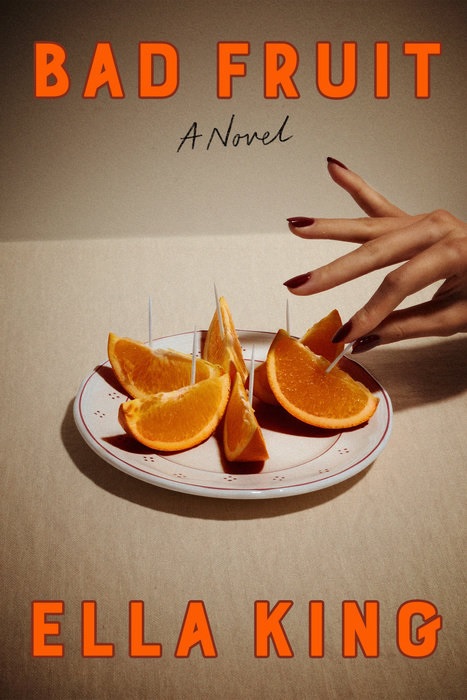 Book you're an evangelist for:
Book you're an evangelist for:
Meg Mason's Sorrow and Bliss, which I finished on a train journey from London and back, utterly captivated by the honesty, humour and roller-coaster ride that is Martha. Now, more than ever, it's so important that fiction fearlessly address taboo subjects like mental health. And, obviously, I'm in love with Patrick, along with thousands of other fans.
Book you've bought for the cover:
I confess my problem with covers: when I love a book, I buy different versions, a sort of declaration of my feelings. Case in point is Thomas Hardy's Tess of the d'Urbervilles, which I love because of its challenge to traditional understandings of innocence, shame, sex and trauma. I have three versions--a complete set of Thomas Hardy's works, which I tell myself is far too heavy to read; a paperback version; and a beautiful 1974 edition I bought in Dorset near Thomas Hardy's cottage.
Book you hid from your parents:
My parents took a divided approach to books. My father loved reading. We spent many happy Saturday afternoons together browsing bookstores, but my mother felt the opposite. She was a tiger mum who thought "stories" were frivolous unless they were about business or law or management (except for John Grisham, who fictionalized the corporate world), so I hid most of my reading from her. My sister and I had a wardrobe that lit up when you opened it; we'd pretend to go to bed early and read under the strip light.
Book that changed your life:
Amy Tan's The Kitchen God's Wife. Not as well-known as The Joy Luck Club and far darker, The Kitchen God's Wife is the closest to Amy Tan's mother's own experience of surviving during World War II. Mothers and daughters trying desperately to communicate across cultures, buried secrets spawning fiercely held misunderstandings, the brutal reality of domestic violence during war--this book not only reflected my grandmother's experience in China but also made me realize my family's story wasn't unique and that I wasn't alone in my separateness and connectedness to both white and Asian culture.
Favorite line from a book:
For me, no one but Ocean Vuong captures the violence and beauty of being raised in the legacy of war. These lines from On Earth We're Briefly Gorgeous devastate me every time: "All this time I told myself we were born from war--but I was wrong, Ma. We were born from beauty. Let no one mistake us for the fruit of violence--but that violence, having passed through the fruit, failed to spoil it."
Five books you'll never part with:
Being an Asian female reader can be a lonely experience. Books that speak to any part of that are few and far between. The books that do achieve this, however, I read over and over, refusing to buy new copies when the covers fall off or when the pages are waved from reading in the bath. Because you don't throw away books like Jing-Jing Lee's How We Disappeared, which reflects your own family's experience during a forgotten war; Amy Tan's The Joy Luck Club, which observes the tensions and misunderstandings between first-generation Asian mothers and their daughters; the essays in East Side Voices, edited by Helena Lee, and The Good Immigrant, edited by Nikesh Shukla, which challenge me to find my unique identity and voice within predominately white culture; and Lisa Taddeo's Three Women, which is so painfully honest about the female collision of sex and desire.
Book you most want to read again for the first time:
Jean Rhys's Wide Sargasso Sea. As a teenager, I read Charlotte Brontë's Jane Eyre before Wide Sargasso Sea and never gave a passing thought to the monstrous woman in the attic. Wide Sargasso Sea, the feminist prequel to Jane Eyre, was my first taste of startling, lush prose, of the subversiveness of untold stories, of women finding power in the midst of their victimhood, of the fact that "there is always the other side, always."
Book Candy
Book Candy
Eliza Acton, the struggling poet who reinvented cookbooks," was profiled by Mental Floss.
Gastro Obscura uncorked "the treasures within the world's greatest wine library."
The One Piece work of art combines all volumes into a 21,450-page book, Siliconera reported.
Colossal featured a giant sharpener that "creates playful pendant lights that mimic colored pencil shavings."
The Two Lives of Sara
by Catherine Adel West
Catherine Adel West's second novel, The Two Lives of Sara, pairs a wrenching portrait of a mother and son in the 1960s with a joyous celebration of Black culture in the South.
Pregnant and unmarried, preacher's daughter Sara King left Chicago to live in a Tennessee boarding house, The Scarlet Poplar. Here she helps out the no-nonsense proprietress, Mama Sugar, in the kitchen and raises her baby son, Lebanon, in the company of a passel of respectable Black boarders. Their dinner-table banter is a pleasure, lightening the tone where Sara, brooding on her situation, might tend toward gloom: "I'm the cynical type. The mean type. The unforgiving type."
Sara tells her own story in a voice as engaging as it is unadorned, sometimes addressing Lebanon directly. "I got on a bus, and I came to Memphis. I birthed you. Mama Sugar and I tell people your father died in a car accident. But that's not true, is it, child?" She recalls her life back in Chicago when, not many years ago, she was a carefree teenager alongside her best friends, Naomi and Violet. The flashbacks gradually shed light on the mystery of Lebanon's paternity. The shame she feels over her son foreshadows a traumatic revelation, one that seems to be connected to her resistance to churchgoing in Memphis. "I've said before church isn't... it isn't something I do. Not anymore," Sara tells Mama Sugar.
At The Scarlet Poplar, Sara also takes Mama Sugar's grandson, Will, under her wing. He's a bright boy who loves to read and discovers classics of African American and world literature under the tutelage of his teacher, Jonas Coulter. Sara frets that the special attention Jonas shows to Will could give the boy unrealistic expectations about what he can achieve. Meanwhile, Jonas serves as a wholesome father figure for Will, whose own father, Amos, a drinker and gambler, frequently gets beaten up--and threatened with worse--by those to whom he owes money.
As romance sparks between Jonas and Sara, he introduces her to the vibrant Memphis downtown. They eat pulled pork sandwiches and listen to James Brown on the jukebox. The Black music scene adds to the novel's backdrop, as does Southern food. Nina Simone is as likely to come up during discussions at the boarding house as is the best way of serving grits. Despite her antipathy to religion, Sara helps with the cooking for the church's Revival picnic, and her caramel cake becomes famous enough for her to consider opening her own bakery.
West has clearly done her research on segregation and the Civil Rights movement. History is a strong undercurrent in the novel. Readers hear rumors about the Freedom Riders and mentions of famous speeches given by John F. Kennedy and Martin Luther King, Jr.--whom Sara's last name inevitably brings to mind. Characters also lament the white appropriation of Black art when Elvis comes on the radio: "Ain't got much against him but all he doin' is singing our music. But he get paid for it. We don't," complains Buster, one of the boarders. Jonas agrees with him: "We create. White people take it and then say it's theirs."
Throughout, there is a solid sense of the time period. The Scarlet Poplar feels like a bastion against the Jim Crow South. There are frequent references to Black colleges, history, leaders and literature. Through the books that Will reads with Jonas, West gives a survey of African American literature that was important at the time and just as relevant today, such as James Baldwin's The Fire Next Time, Langston Hughes's poetry and Ann Petry's The Street. American literature in general is a touchpoint--no doubt The Scarlet Poplar is an allusion to Nathaniel Hawthorne's The Scarlet Letter, the classic tale of an unmarried mother.
The Two Lives of Sara explores one aspect of the backstory of West's 2020 debut novel, Saving Ruby King, but both books can stand alone--this is less a prequel than a companion novel (or "sibling book," as West's editor calls it). Ruby is Sara's granddaughter, and at places in her story there are glimpses into Sara's past, so those who have read Saving Ruby King will appreciate learning more about her.
The hardships she has undergone have made Sara blunt and sometimes even spiteful. She has closed off her heart to pain--but also to love. This is not surprising, given everything she has been through, including the momentous events of her time in Memphis. The book opens with the promise of a second chance for her and Lebanon, but will it be snatched away by fate? Her challenge is to reconcile her past in Chicago with the new life she has built. "Maybe there's a way to unite my two lives, who I was with who I am now," she muses. Readers will be carried along with her heart-tugging story while enjoying time spent in the Black South in the 1960s. --Rebecca Foster
The Search for Something Meaningful
An Interview With Catherine Adel West
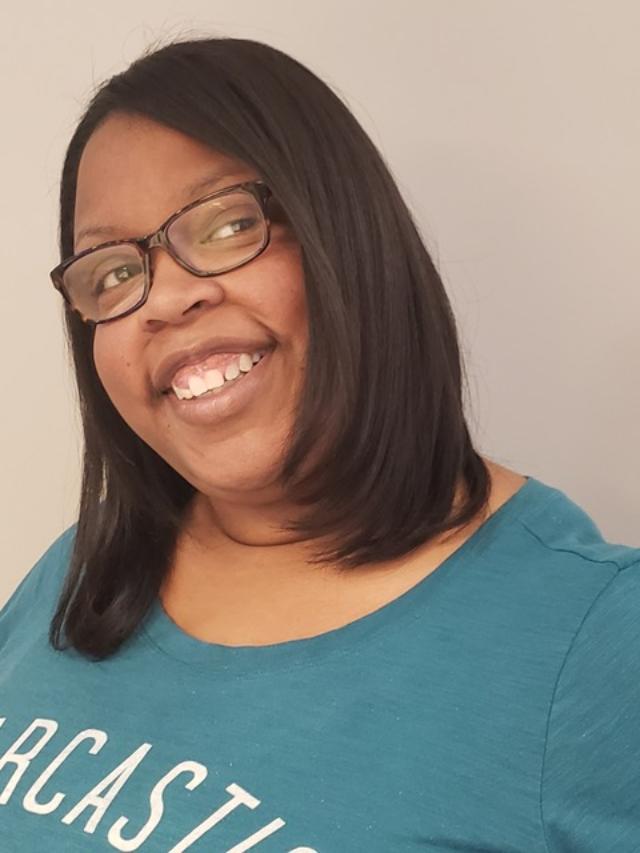 Catherine Adel West's The Two Lives of Sara (Park Row) is a "sibling book" to her 2020 debut novel, Saving Ruby King. Both explore the challenges faced by African American women, with The Two Lives of Sara focusing on an unwed mother from Chicago who arrives in Memphis in the early 1960s, hoping to escape her past and forge a new life. West, a Chicago native with an M.A. in journalism, also has a short story in the YA anthology Every Body Shines.
Catherine Adel West's The Two Lives of Sara (Park Row) is a "sibling book" to her 2020 debut novel, Saving Ruby King. Both explore the challenges faced by African American women, with The Two Lives of Sara focusing on an unwed mother from Chicago who arrives in Memphis in the early 1960s, hoping to escape her past and forge a new life. West, a Chicago native with an M.A. in journalism, also has a short story in the YA anthology Every Body Shines.
How would you characterize the relationship between Saving Ruby King and The Two Lives of Sara?
Both books have the character Sara in common, but they are distinctly different stories with different characters, time periods and cities. They also delve into different themes. Saving Ruby King deals with the reoccurrence of and secrecy surrounding generational trauma. The Two Lives of Sara explores learning to live and thrive beyond trauma, and the limits of resilience. The books can be read in any order and can slightly inform one another, but you can just read each one on their own and feel a sense of resolution.
What appealed to you about Memphis in the 1960s as a setting?
Memphis is known for music, food and entertainment. It's also an American Civil Rights mecca. There are so many additional appealing aspects, but that's not the reason I chose this location for The Two Lives of Sara.
I chose it because I had to. There was a part near the end of Saving Ruby King where Sara mentioned going to Memphis and what she experienced there. It was a couple of throwaway sentences. They sounded pretty and I was just writing a book--a book I didn't think would be published at the time.
When Saving Ruby King was acquired by Park Row/HarperCollins, they were interested in a second book. Sara's story was kinda perfect. But I'd backed myself into a corner since I didn't know Memphis the way I know my hometown of Chicago, and I couldn't arbitrarily change the city. So, I had to do a lot of research, read books, newspaper articles and academic papers. I even had the opportunity to interview native Memphians about their lives and experiences in the city.
Everything I learned about Memphis was through a novice lens, and this informed how Sara learned about Memphis, too, which added to the authenticity of her experience when she first arrives.
There are many mouthwatering descriptions of Southern food. When and how did you know that cooking was going to be a major element of the book?
I knew almost immediately food was going to be central to this book. Using food is the perfect opportunity to show care, love and support. It's a way to ask forgiveness or express appreciation. Food is a way to bring a community together. It's also an interesting way to show someone's personality. You can tell a lot about someone by how they cook or bake, how much care they put into a honey-baked ham or a sweet potato pie.
Food can expose a reader to different cultures--from the language and terminology used, to the spices, to the methods by which different dishes are prepared. It's another way to enliven the senses and draw readers into a story.
Ultimately, I wanted to show how food and its preparation is also a way to calm and control your surroundings in a time and place where Black women especially had to fight (and still fight) for agency and recognition both inside and outside of our communities, the nation and the world.
Music is also key in the novel. What role does it play in your life, and how does it add color to the narrative?
Music is universal in its ability to elicit emotion. We all have songs that instantly evoke memories or feelings--good, bad and ugly. The way I use music in my book further adds to the personalities of each character.
Doing research on which songs to add was so much fun, but just a bit tedious because I could only use certain songs as the book takes place in Memphis during the early 1960s. Unfortunately, there were some songs I really wanted to include, but they didn't come out until September 1966 or August 1968, which didn't match the time of the story.
However, selecting the songs for this story was one of my favorite parts during the initial draft phase. You can't go wrong with good food or good music!
You mention a lot of works of literature, including African American classics. What books particularly inspired you here?
About 90% of the books I reference in The Two Lives of Sara are written by African American authors, except for Georges by Alexandre Dumas and one other book. I wanted to interweave as much Black literature as possible. It had (and has) such a seismic influence in my life and the writer I strive to be.
The basic premise of The Street by Ann Petry, as well as the themes and character arcs, mirrors a few parts of The Two Lives of Sara. Also, The Rubáiyát of Omar Khayyám was one of my mom's favorite books growing up, so it's a little nod to her influence on me and the literature I enjoy.
I wouldn't be half the writer I am if I didn't read books by James Baldwin, Ralph Ellison, Zora Neale Hurston and so many others.
I understand you also grew up a preacher's daughter in Chicago. Sara's loss of faith is one of many wrenching aspects of the book. Do you think of the novel as autobiographical? How do stories of religion and doubt have continuing resonance for today's readers?
My father became a pastor later in my life and though I grew up in the church, I didn't struggle with my faith because I questioned what I was taught from an early age. I was encouraged to be analytical, do my own research and not take someone's word just because a Bible is in their hands. I was fortunate, as many people who grow up in the church are taught to do the opposite [or risk] some horrible and earned consequence or eternal damnation.
When you question things or behaviors that don't make sense, you're allowed to come to your own conclusions and for me, those conclusions brought me closer to my faith rather than led me further away from it. But I always believe with eyes wide open and never place my faith in people or institutions. Though many are well-meaning, people are inherently fallible and most institutions don't last. I still question. I still continue to learn. I still continue to pray.
As long as there's been religion, there's been doubt. It's a theme that's run through literature since the first words were put to paper. People will always question religion through books, through song, through art, through other means, no matter how you practice or who you pray to. The search for something meaningful beyond the lives we live and how we live them; the back and forth about organized worship, will always be an integral part of the human experience. --Rebecca Foster
Rediscover
Rediscover: Hilary Mantel
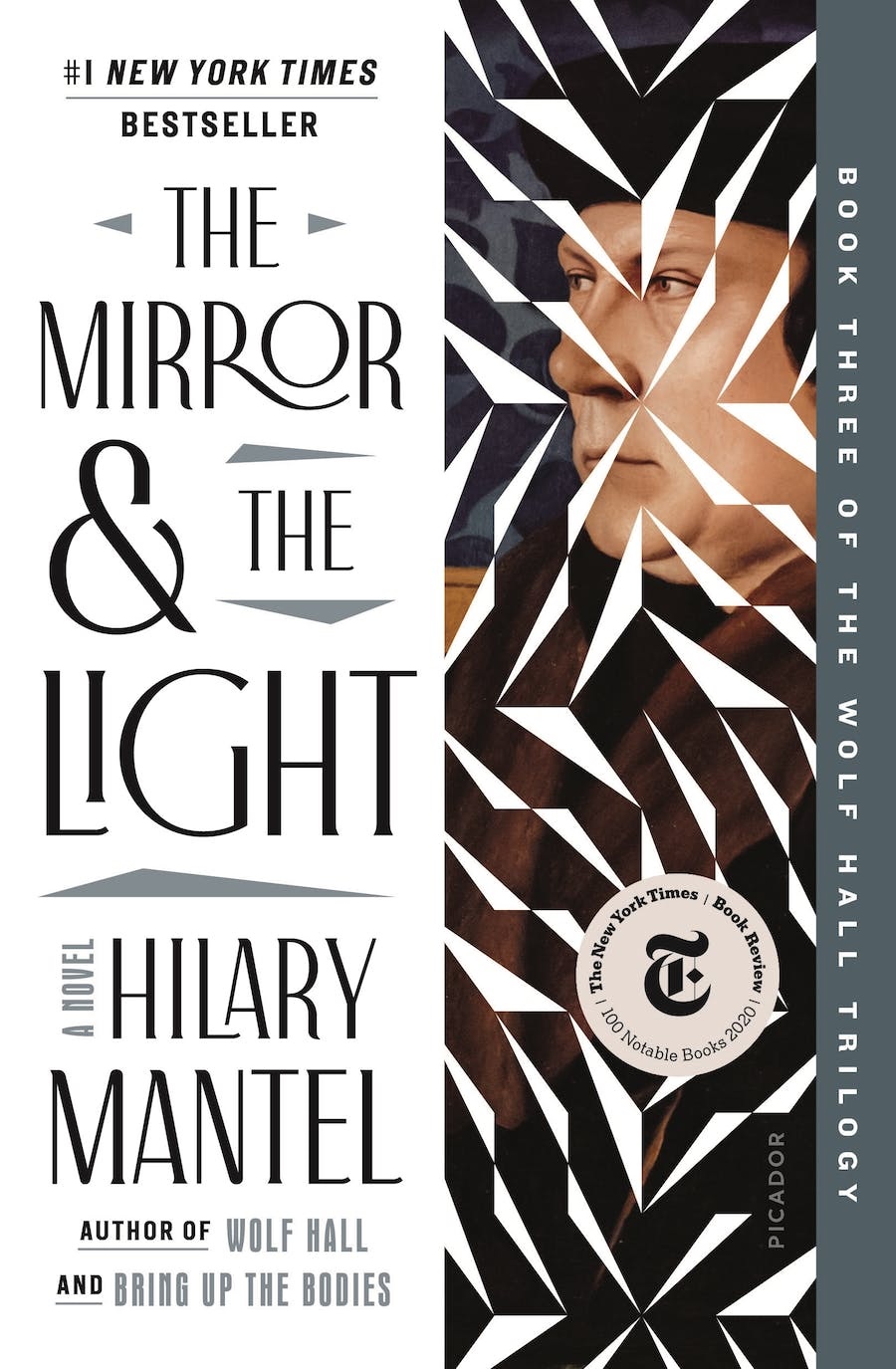 Hilary Mantel, author of the Wolf Hall trilogy and twice the winner of the Booker Prize, died last week at age 70. She won the Booker for the first two books in the trilogy, Wolf Hall and Bring Up the Bodies. Bring Up the Bodies also won the Costa Award. The third book in the trilogy, The Mirror & the Light (2020), was longlisted for the Booker and won the Walter Scott Prize for historical fiction. Her many other titles included Learning to Talk: Stories, Giving Up the Ghost: A Memoir, A Place of Greater Safety, Beyond Black, Fludd, An Experiment in Love and The Assassination of Margaret Thatcher: Stories.
Hilary Mantel, author of the Wolf Hall trilogy and twice the winner of the Booker Prize, died last week at age 70. She won the Booker for the first two books in the trilogy, Wolf Hall and Bring Up the Bodies. Bring Up the Bodies also won the Costa Award. The third book in the trilogy, The Mirror & the Light (2020), was longlisted for the Booker and won the Walter Scott Prize for historical fiction. Her many other titles included Learning to Talk: Stories, Giving Up the Ghost: A Memoir, A Place of Greater Safety, Beyond Black, Fludd, An Experiment in Love and The Assassination of Margaret Thatcher: Stories.
"This is terrible, tragic news and we are filled with sorrow for Hilary's family and friends, especially her devoted husband, Gerald," said HarperCollins CEO Charlie Redmayne in the Bookseller. "We are so proud that Fourth Estate and HarperCollins were Hilary's publisher, and for such a peerless body of work. A writer to the core, Hilary was one of the greatest of her generation--a serious, fearless novelist with huge empathy for her subjects. Who else could have brought Thomas Cromwell, Henry VIII and the huge cast of the Wolf Hall Trilogy to life with such insight, frailty and humanity but her? We will all miss Hilary's company, her wisdom, her humour, and treasure her incredible literary legacy--she will be read as long as people are still reading."
In a New Yorker magazine tribute, Larissa MacFarquhar observed: "If Britain were as grateful for her as it ought to be, there would be another funeral next week, as magnificent as the one for the Queen this week, though it would be attended by different people because Mantel could be rude about royalty. There are not many writers who, like prophets, seize, melt down, and reshape the archetypal stories of their people."
The Mirror & the Light is available in paperback from Picador ($18).


